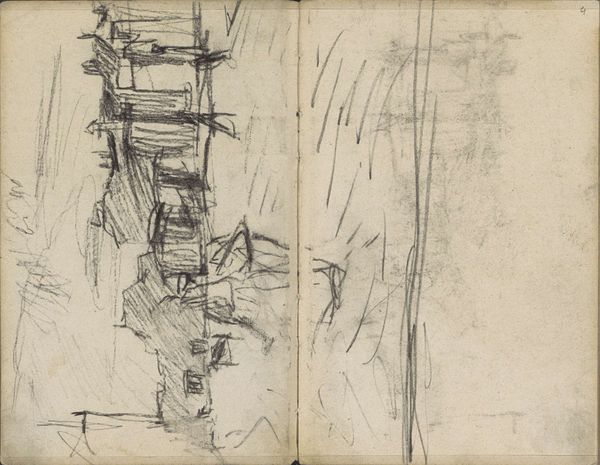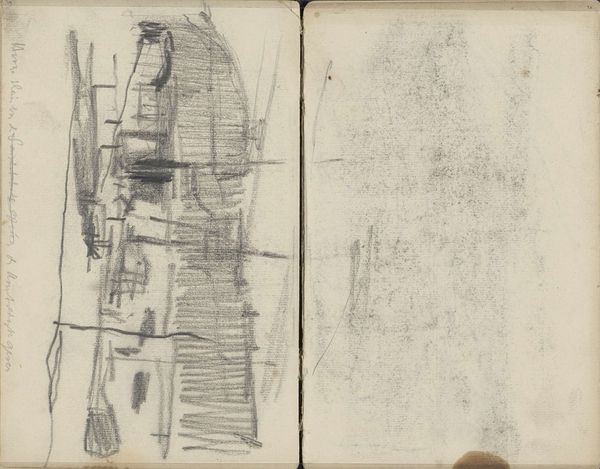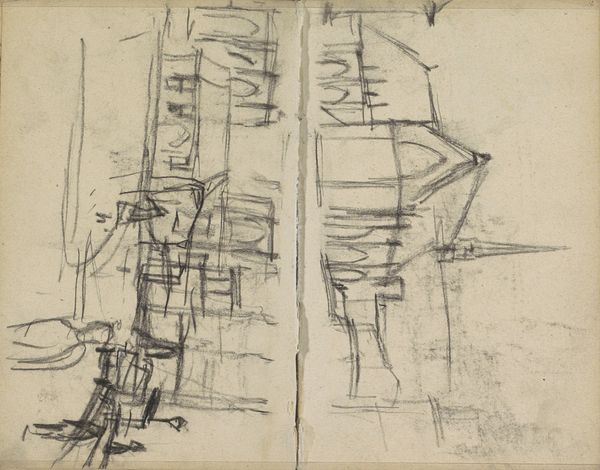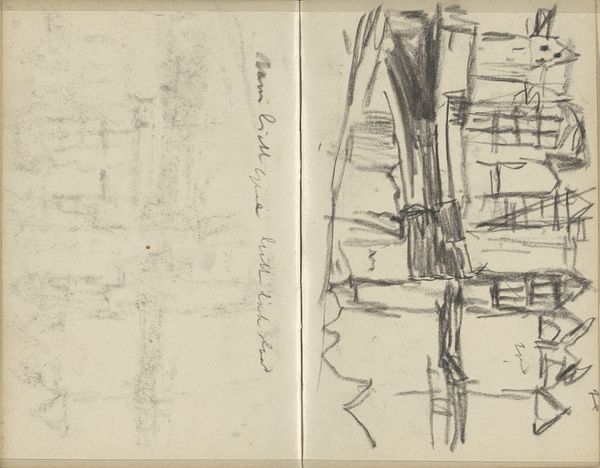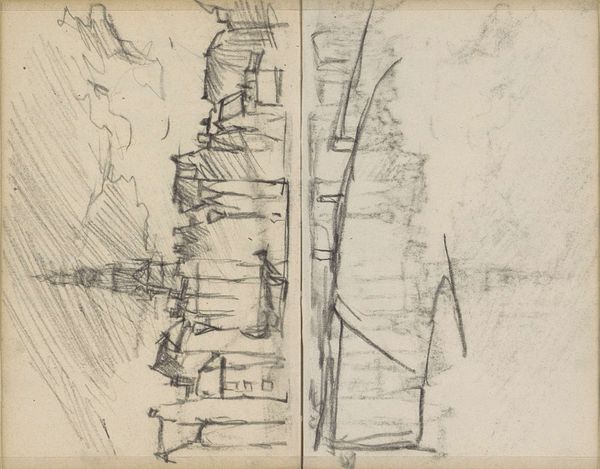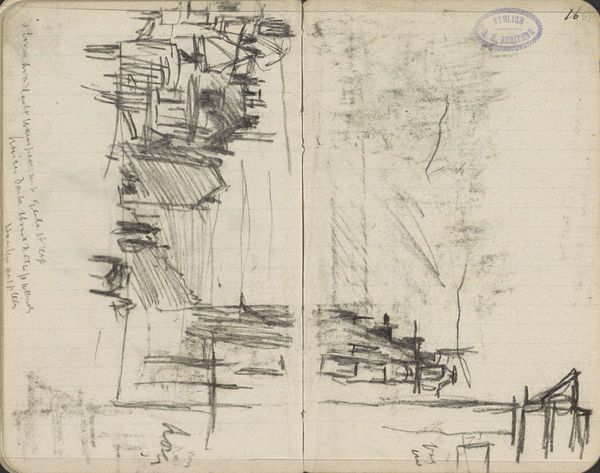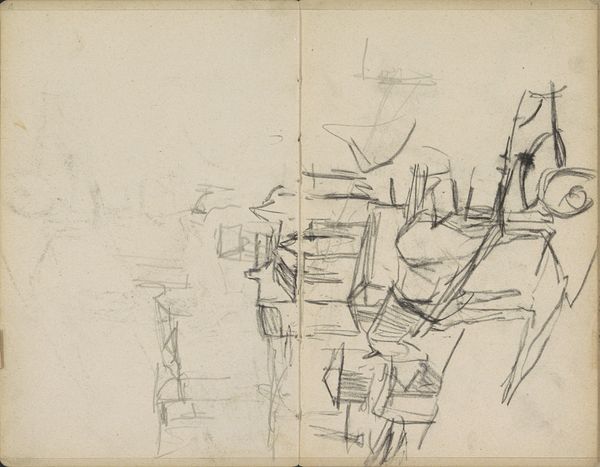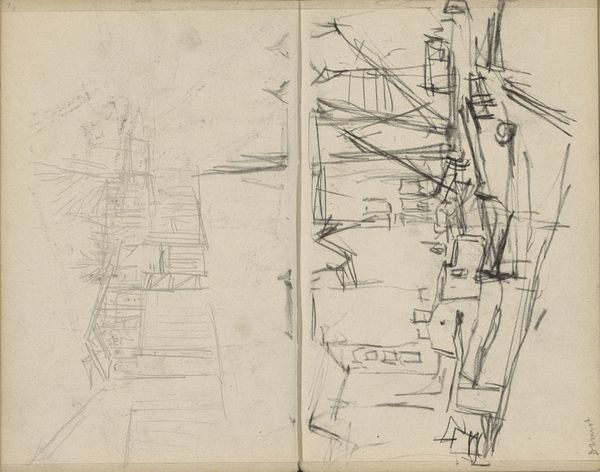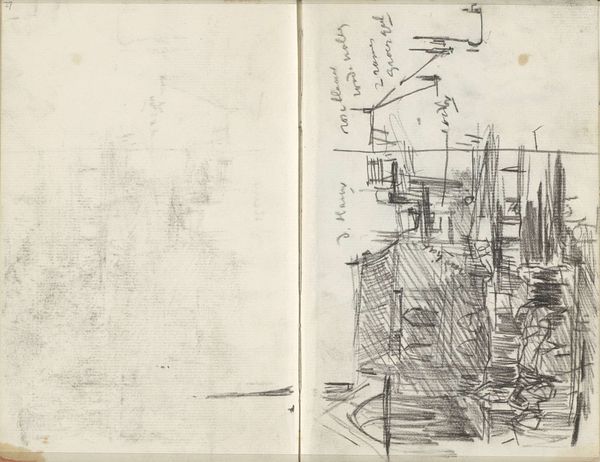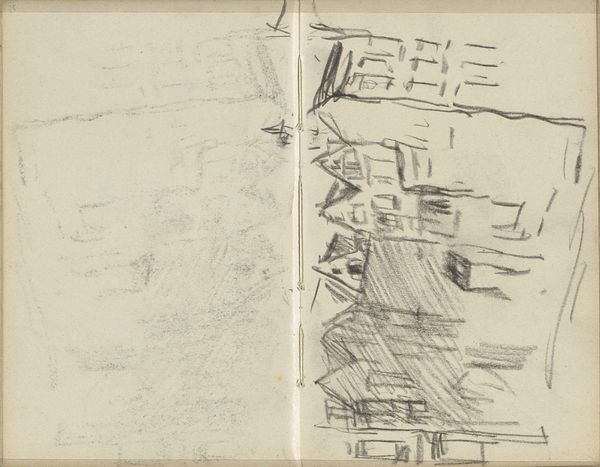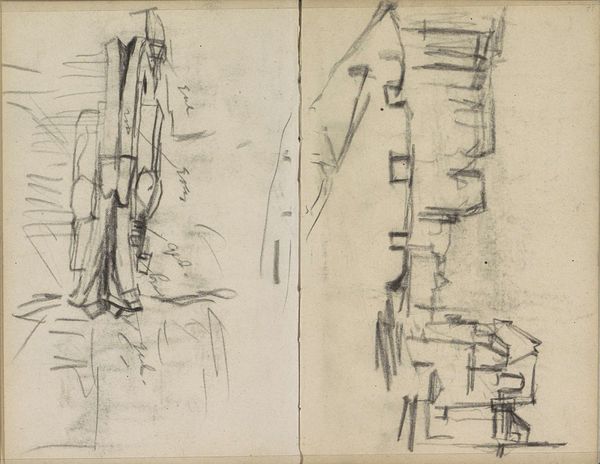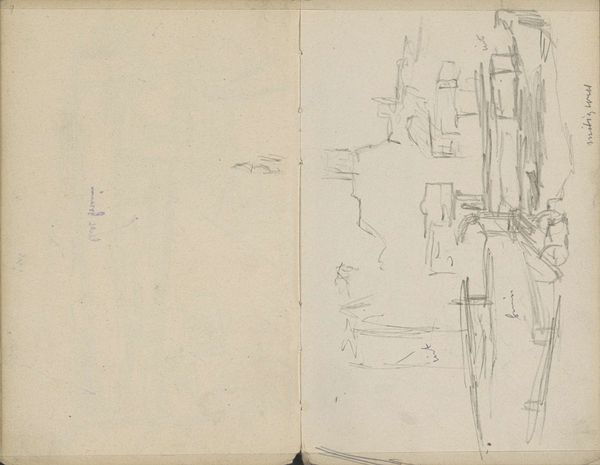
Copyright: Rijks Museum: Open Domain
Editor: This is George Hendrik Breitner's "View in Amsterdam, possibly the Damrak," from 1910. It's a drawing, likely pencil or ink, from one of his sketchbooks, housed at the Rijksmuseum. It feels so immediate, almost like a fleeting impression captured on the page. What do you see in this piece, especially regarding its raw, unfinished quality? Curator: That "raw, unfinished quality," as you put it, speaks volumes. Consider the historical context: Amsterdam was rapidly industrializing at this time. Breitner, rather than idealizing the city, seems to document its hurried evolution. The sketch, with its fleeting lines, mirrors the transience he observes. Notice the repetition of shapes. Do you see any symbols in particular? Editor: The verticality of the buildings stands out. Perhaps they symbolize ambition or progress? But I’m also struck by the empty spaces within the sketch itself. Curator: Exactly. Those voids, those silences, become symbolic in their own right. They suggest the unspoken, the absences inherent in urban growth. The rapid development, as suggested by the upward thrust of the buildings, often leaves behind gaps in memory and experience. Think about how different sections of the population may have perceived Amsterdam, how wealth may be represented. Does this alter your perception of this sketch? Editor: Definitely. I see how Breitner's sketch captures a specific moment, but also speaks to the larger cultural narrative of progress and loss. Curator: Precisely. And in recognizing those cultural tensions, we start to grasp the powerful, layered meanings embedded within seemingly simple sketches. These drawings almost become like memories themselves: fragmentary, impressionistic, yet deeply evocative of a specific time and place. Editor: Thank you for shining some light on Breitner's work. This was amazing.
Comments
No comments
Be the first to comment and join the conversation on the ultimate creative platform.
